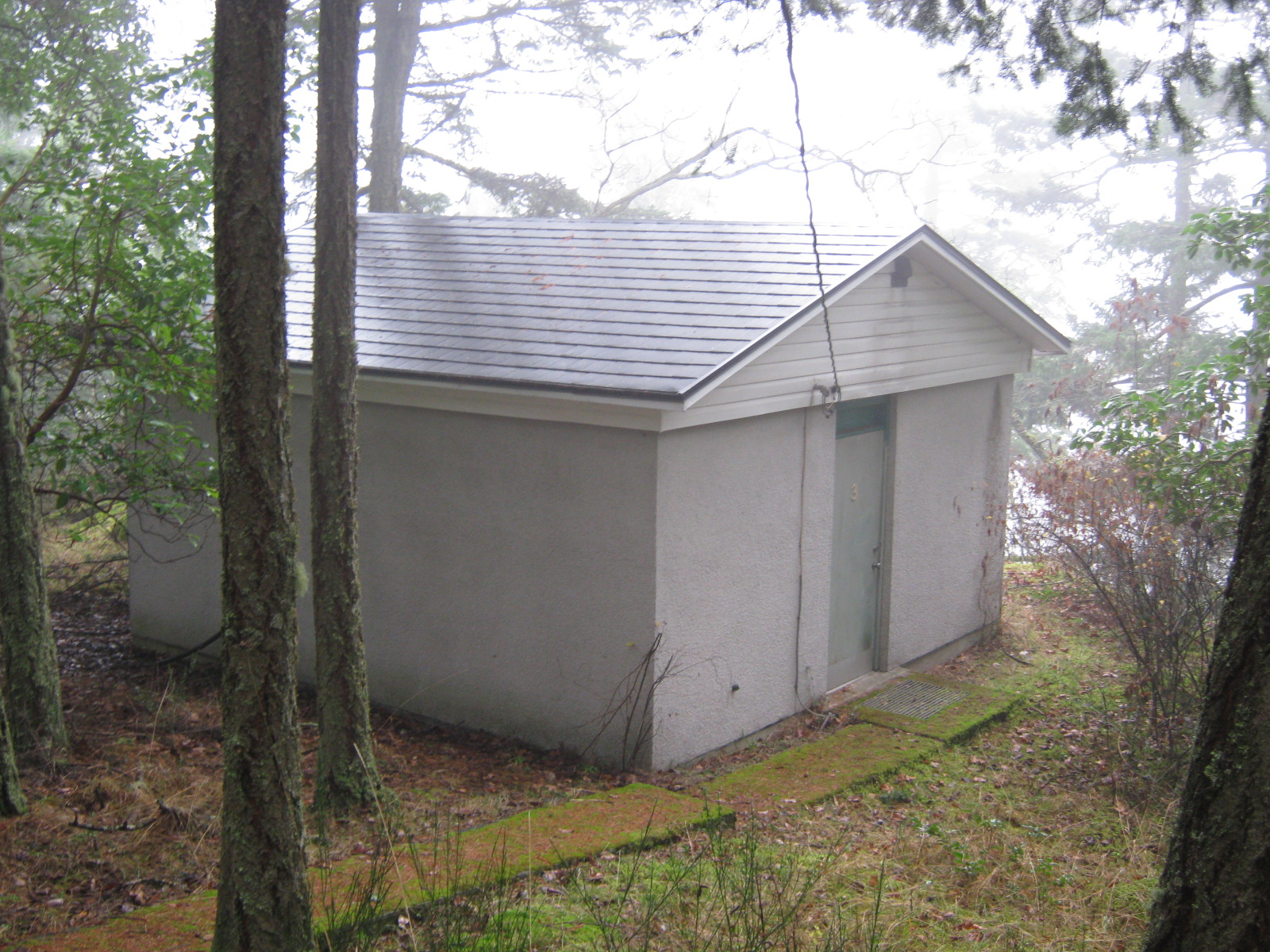Victoria (VIC) Magnetic Observatory

| Name | Victoria |
|---|---|
| IAGA alphabetic code | VIC |
| IAGA numeric code | 041237 |
| Geographic coordinates | 48.520° N, 236.580° E |
| Geomagnetic coordinates (IGRF-12 (2015)) | 53.81° N, 60.75° W (2015.0) |
| Elevation | 197 m |
| First year | 1957 |
| Observatory data | link |
For more information about IAGA, please visit the IAGA web site.
The Victoria Geomagnetic Observatory was established in 1957 on the grounds of the Dominion Astrophysical Observatory ( now the National Research Council of Canada) on Little Saanich Mountain about 16 km north of Victoria, British Columbia. The Observatory is pleasantly situated, some 197 m above mean sea level, in a wooded area about 120 m northeast of the Dominion Astrophysical Observatory office building. The site was chosen in 1956 for convenience to observatory facilities and power, while maintaining adequate separation from buildings and pipelines.
The area is one of acid intrusive rocks of Mesozoic age. A survey was made in 1956, using a 7.5 m grid separation of stations, to determine the vertical magnetic field intensity gradients. This revealed an average station difference, independent of sign, of 25 nT ± 20 nT standard deviation in any one difference. No large anomalies exceeding 25 nT were found within 30 m of the building site and the distribution of small anomalies was apparently random. Beyond this distance to the southeast a decrease of 50 nT was noted. The building site was therefore chosen for its fllatness and convenience as the ground falls rather steeply on east part of the site.
Originally the magnetic equipment occupied an insulated aluminium prefabricated 4.5 m x 6.5 m building, erected in 1956 with its long axis oriented in magnetic north-south.
A permanent variometer building was completed in September, 1959, located about 30 m to the east of the original temporary building; it is an insulated 5.5 m x 5.5 m cement block structure containing two 2.5 m x 4.5 m rooms and a 1 m x 5.5 m light trap entrance. The floor is a single concrete slab resting on bedrock, providing flexibility in location of instruments as well as an effective heat-sink. The control equipment for the electronic magnetometer, as well as other auxiliary variometer equipment (chronometer, power supplies, etc.) remain in the original temporary prefabricated building, with control cables linking the two buildings. The auxiliary equipment for the photographic recorders as well as that for the AMOS Mk I was moved from the prefabricated building to the office building in June, 1976.
A permanent building for the absolute instruments was completed in September 1961, located about 30 m north of the variometer and control buildings.
A three-component Ruska magnetograph was installed in September 1969. Prior to this date a portable Askania-Werke earth magnetic variograph had been the primary photographic recorder. The Ruska magnetograph ceased operation and was removed from the Observatory in April, 1985. In addition, the GSI precise magnetometer made by Sokkisha (Japan) was replaced by a D&I measuring fluxgate theodolite (of Earth Physics Branch design) as the primary instrument for the absolute determination of Declination and Inclination .
Digital recordings were begun in June, 1971 with the installation of the Earth Physics Branch's AMOS Mk I. The AMOS Mk I became the primary recorder for Victoria Observatory in June, 1976. The AMOS Mk I was replaced by the AMOS Mk III in April, 1985. In turn, the AMOS Mk III was itself replaced by the CANMOS in March, 1992. The CANMOS is the present primary instrumentation at Victoria Geomagnetic Observatory.
CANMOS (Canadian Magnetic Observatory System) has been designed by the Geomagnetic Monitoring Service staff, who have developed the software to control the magnetometers and to process the basic digital data. CANMOS includes:
- a commercial tri-axial ringcore fluxgate magnetometer, mounted on a tilt-correcting suspension (of NRCan design)
- an Overhauser Proton Precession Magnetometer
- a bus-clock for timing control
- various storage media
- RS-232 outputs for 1 second, 5 second and 1 minute data streams
The AMOS MK I and III were instruments designed and manufactured by the then Dominion Observatory and Earth Physics Branch. These instruments differ significantly from a commercial version which was also named AMOS.